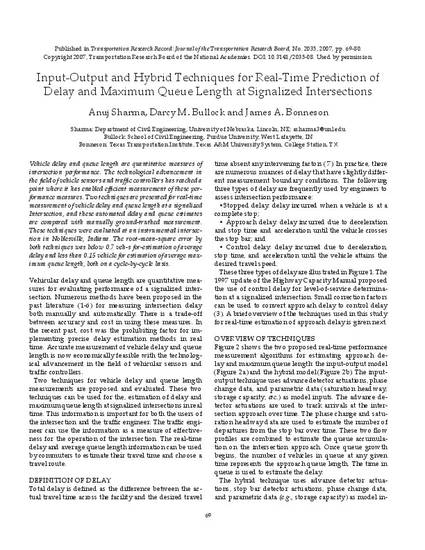
Transportation Research Record: Journal of the Transportation Research Board, No. 2035 (2007): 69-80. DOI: 10.3141/2035-08.
Vehicle delay and queue length are quantitative measures of intersection performance. The technological advancement in the field of vehicle sensors and traffic controllers has reached a point where it has enabled efficient measurement of these performance measures. Two techniques are presented for real-time measurement of vehicle delay and queue length at a signalized Intersection, and these automated delay and queue estimates are compared with manually ground-truthed measurement. These techniques were evaluated at an instrumented intersection in Noblesville, Indiana. The root-mean-square error by both techniques was below 0.7 veh-s for-estimation of average delay and less than 0.15 vehicle for estimation of average maximum queue length, both on a cycle-by-cycle basis.
Available at: http://works.bepress.com/anuj_sharma1/15/

Copyright 2007, Transportation Research Board of the National Academies. Used by permission.